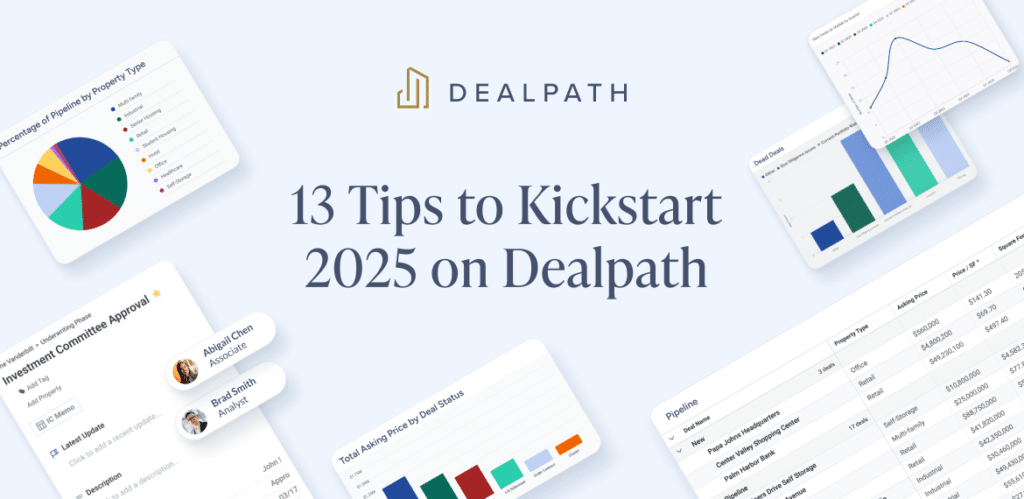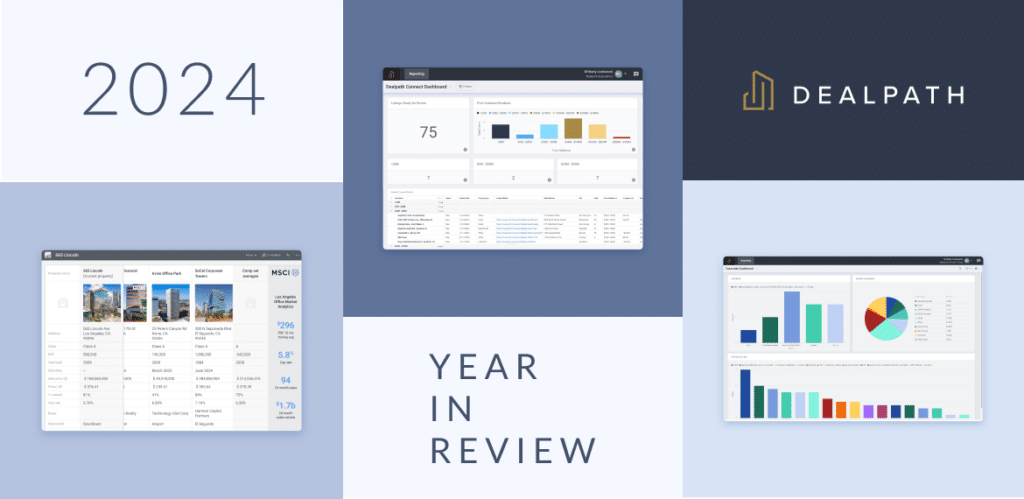Financial metrics like cap rate, internal rate of return and other criteria play a pivotal role in weighing investment decisions. But, institutional investors tend to prioritize specific markets that promise high returns and ongoing growth in one or several asset classes, driven largely by prior institutional performance and experience. To select regions that warrant strong consideration, investors will perform a commercial real estate market analysis, which can add much-needed color around the prospects of deploying capital in a certain area.
Read on to learn more about how to perform a commercial real estate market analysis, the differences between markets and sub-markets, and more.
What Is a Market in Commercial Real Estate?
A commercial real estate market is a targeted geographic area in which a firm might invest. In some contexts, markets might also be referred to as metropolitan statistical areas, or MSAs. Commercial real estate markets tend to have high population densities, often spread throughout several communities or sub-markets. Real estate markets are bound by an interdependent economy, typically favoring at least one sector.
Each commercial real estate market represents a distinct opportunity for investors with unique, often intertwined factors to consider. While one investment strategy might favor gateway markets like New York, another might lean specifically toward sunbelt states. Neither is necessarily ideal, but investors with unique experiences may prioritize their efforts based on prior performance.
Comparing Markets With Sub-Markets in Commercial Real Estate
Beyond the general market in which a property resides, investors often also analyze sub-markets within it. Sub-markets offer investors a more granular perception of a property’s location, along with the financial, cultural and other implications. For example, the South Boston Waterfront sub-market sits within the broader Greater Boston MSA.
Commercial Real Estate Market Analysis: How Are “Good” Markets Defined?
Before jumping into a commercial real estate market analysis feet first, it’s crucial to understand how to measure and assess various markets. No two markets are exactly the same–there are countless macroeconomic and trend-driven factors that could have a material impact. From tourism, to business, lifestyles and hobbies, each market comes with unique characteristics–which directly influence the bottom line.
As your firm explores new territories and performs commercial real estate market analyses, these are the factors that you must consider.
1. Popular Asset Classes
Major cities will hold demand across all asset classes, but analyzing commercial real estate markets helps investors to understand which asset classes drive the highest returns. Financial capitals might prove better options for office investors, while tourism hotspots will inevitably hold more opportunities for hospitality-focused firms. Investors often hedge their bets on asset classes that have performed well based on previous experience.
2. Local Economic Factors, Businesses & Jobs
On the opposite side of the coin, it’s equally important to understand the industries that thrive, and their impact on the broader CRE market. What local drivers are creating jobs? Is there a certain industry dominating the economy? Understanding the market’s landscape enables investors to make more predictive, forward-looking decisions.
3. Analyze Population Growth to Determine the Commercial Real Estate Market’s Potential
Is the population growing or shrinking? Is there a demographic cohort that accounts for a large influx or reduction in new residents? Examining population growth trends–together with the broader forces shaping them–can yield insights about these markets. For the most vivid picture, you should also consider hyper-local trends that might only be prevalent in sub-markets.
4. Average Income & Spending Power
Before deploying capital in a new market, you must ensure that tenants can generate revenue to pay rent. If the median salary doesn’t support a new multifamily development, for example, then investing in one might not make sense. Conducting a commercial real estate market analysis can help your firm to understand whether or not local income supports your investment thesis.
Local Factors to Consider During a Commercial Real Estate Market Analysis
Beyond broad market insights, local variables–which are more difficult to generalize and must be considered for each submarket–are also critical. As part of this more granular commercial real estate market analysis, be sure to consider:
- The property’s location: Is it located on the beaten path? If necessary, will tenants generate enough foot traffic to drive their revenue and your returns?
- Proximity to transportation: Will properties that depend on local foot traffic be accessible to residents?
- Sub-market growth: Is the local economy trending upwards and creating economic opportunities?
- Local competitors: Do current properties in the area validate your investment hypothesis? Or could high vacancy rates in similar properties nearby indicate a lack of potential?
By understanding the sub-market on a deeper level, your firm can invest more proactively and strategically.
Relying on Data for Commercial Real Estate Market Analysis
To invest in today’s fast-moving market, your firm must rely on technology–but Excel may not exactly cut it. As you review new deals in various sub-markets, it’s essential to keep data and information organized. That’s why firms rely on real estate deal management software like Dealpath to source, manage and execute deals collaboratively.
Rather than manually aggregating data in disparate spreadsheets, deal management software enables your firm to:
- Standardize data: Programmatically build a database with comps and other data for simplified screening and comparisons
- Centralize efforts: Rely on one platform for all deal management and data across the organization
- Collaborate in real time: Work with up-to-the-minute data and information, instead of spending hours relying on potentially dated information
As your firm sources and screens new deals, deal teams can seamlessly drill down into relevant market opportunities. Not only does this approach to investment conserve time, it also allows for a more holistic approach–reducing the risk that relevant comps slip through the cracks or misinform investment criteria.
7 Ways to Augment Your Existing Commercial Real Estate Pipeline Process
After analyzing several commercial real estate markets and determining your firm’s focus, the next challenge becomes screening enough deals to identify the most profitable opportunities. Before gaining the bandwidth and building efficiencies to scale deal flow, though, your firm needs the right infrastructure to invest with speed and precision. Once they started managing deals in Dealpath, one of the top 20 investment managers reviewed 194% more deals.
Download our white paper, 7 Ways to Augment Your Existing Commercial Real Estate Pipeline Process, to learn how your firm can achieve the same speed, scale and efficiency.



